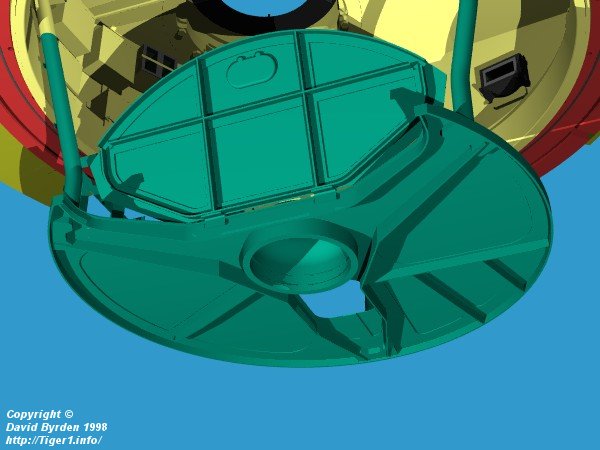About this detail of the Tiger
If you wish to make a Tiger model in which the turret can be lifted out for close inspection, you will need to know what was underneath the turret floor - not a commonly photographed place! In the Tiger I the underside of this floor had a distinctive pattern of reinforcing ribs, visible in the diagram below. Note that this diagram is a work in progress; some components are missing from the upper part of the turret.

The diagrams below describe the turret floor in early-model turrets; they are not valid for turrets after the 1943 redesign. The blue marks indicate centimeters in 1/35 scale. The paint, as I explain in my Panzers site, was the same overall colour as the rest of the lower hull; while it could get very oily and worn away on top, the bottom would be pristine.
The strengthening ribs were flat strips of metal, except for one which had an L-shaped cross-section. The major ones were 45mm in width, tapering towards the outside; the minor ones were 30mm. The rim surrounding the floor was 35mm high, and the small round protective rim in the center was 55mm high. The overall diameter of the floor was 1460mm (scales down to 41.7mm or 1 41/64 inch).
Part of the the turret floor was a hinged door which could be lifted and latched into place. In early Tigers, the latch for it was on the jerrycan storage frame. In later Tigers this frame was moved and then eliminated completely, after which the floor panel could be swung almost all the way back.
[1] Survey of Tiger 250122, at Bovington museum, by David Byrden